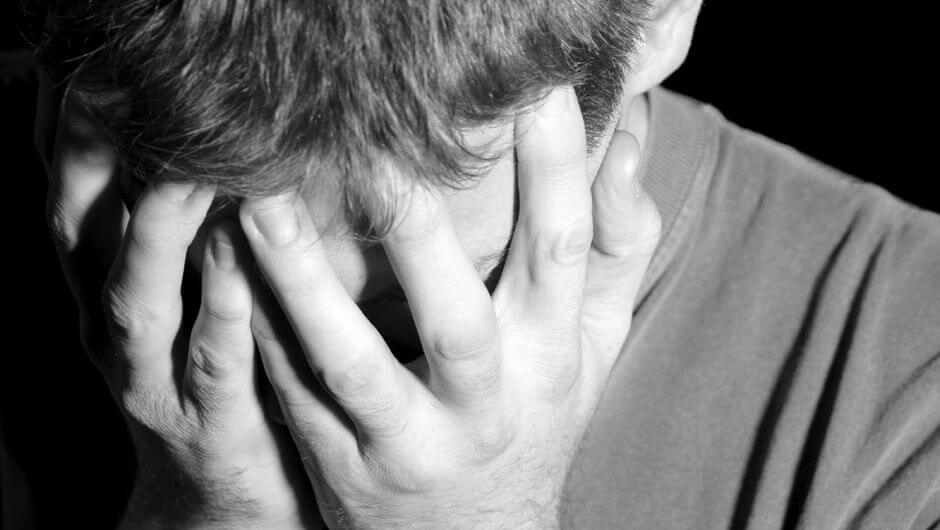Parathymia: Definition, Symptoms and Associated Disorders

Parathymia is an emotional disorder that’s characterized by incongruity or inadequacy between affectivity and context. It also encompasses situations or manifestations where the patient’s emotional expression is incompatible (or incongruous) with their verbal expression.
In this article, you can learn a little about this disorder, its characteristics, examples, differences with other affective disorders, and conditions in which it appears more frequently. In addition, we’ll explain what the psychopathology of affectivity consists of.
The psychopathology of affectivity

Affective psychopathology is a very specific field of psychology that deals with studying and describing disorders or alterations of affectivity. In other words, abnormalities in terms of affective states (the underlying experiences of feelings, emotions, and moods).
We can define affectivity as the set of states and tendencies that a person experiences in their own way. In fact, it encompasses all those experiences that define and limit the emotional life of the individual. It transcends personality and behavior.
As we can see, it’s a phenomenon of a subjective and idiosyncratic nature. However, what about parathymia?
Parathymia
Parathymia is an affective disorder characterized by the inadequacy of emotional expression in the context (or situation) in which the individual finds themselves. In other words: the affective state they exhibit externally is incongruous with the context or environment.
We also speak of parathymia when the individual’s facial expression doesn’t correspond to the feeling that they’re verbally expressing. For example, when someone tells you that they’re suffering a lot while smiling.
One illustrative example of parathymia would be laughing out loud at a funeral, or crying with sadness when told some good news. Indeed, a person suffering from parathymia will manifest reactions that don’t correspond naturally with the content of their experiences.
The inadequacy of parathymia
As we’ve seen, in parathymia there exists an inadequacy. This can either be between emotional expression (eg. crying) and context (eg. at a party). Alternatively, it can be between emotional and gestural expressions (eg. laughing) and what the patient verbalizes (eg. says they feel extremely sad).
In addition, this inadequacy can refer both to the meaning and the intensity of the affective component that accompanies the experience. That’s to say, when the intensity is excessive or less than “expected”.
What disorders is parathymia associated with?
Although it’s true that a person can suffer from parathymia in isolation (that is, without having another underlying mental disorder), this affective disorder is observed, above all, in some mental or medical disorders. These are as follows.
Schizophrenia
The Swiss psychiatrist Eugen Bleuler (1857 – 1939) included parathymia as one of the fundamental symptoms of schizophrenia.
The other symptoms that he considered fundamental in this disorder were the relaxation of thought associations (incoherence), the alteration of the subjective experience of the personality (depersonalization), autism, and affective, intellectual, or ambivalence of the will.
Parathymia particularly occurs in cases of schizophrenia with negative symptoms. In fact, according to Dr. Tomás Rodelgo, when parathymia occurs in people with schizophrenia, they can behave in a “silly” way or with a particular childish joy.
Manic-depressive psychosis
The term manic depressive psychosis was created by Emile Kraepelin. He included it in the sixth edition of his book entitled Psychiatry (1896). This condition consists of a disorder of the psychotic spectrum in which psychotic episodes appear that occur with depressive and manic manifestations.
It doesn’t follow a deteriorating course, unlike schizophrenia. As a matter of fact, today, this term is obsolete and has been replaced by “bipolar disorder”.
Organic brain syndrome
In organic brain syndrome, parathymia can (and usually does) appear. This term refers to the alteration of mental function due to a non-psychiatric illness. Its most frequent causes are intoxication or overdose of any substance (drugs) as well as certain dementias and infections, etc.
Depression or mania

Although it’s much less common, parathymia can also appear in depressive or manic disorders. Multiple other symptoms would be present in both these cases.
In the instance of depression, we find other associated symptoms beyond parathymia (which is much less typical), such as deep sadness, guilt, fatigue, insomnia (or hypersomnia), lack or excess appetite, etc.
However, in the case of manic disorders, the associated symptoms include distraction, fleeting ideas, decreased need for sleep, verbosity, and psychomotor agitation, etc.
Differences to other affective disorders
We mustn’t confuse parathymia with other affective disorders. Here are some of those that are most likely to cause confusion:
- Emotional lability. In this case, there are sudden changes in the affective state and no control of emotions.
- Affective ambivalence. Opposite emotions are experienced simultaneously about the same object or situation.
- Affective rigidity. Here, there’s a loss of the ability to regulate and adapt emotions to the context.
- Neothymia. This disorder involves the appearance of a new feeling. In fact, it’s difficult to recognize because it’s never been experienced before.
“Cherish your own emotions and never undervalue them.”
-Robert Henri-
Parathymia is a disorder that will ideally be treated from a multidisciplinary perspective (including psychiatry and psychology).
Knowing its causes, the factors that maintain it, and its impact on the patient’s life, are key elements in treating parathymia and improving the well-being of the individual. Furthermore, as always, their global reality and the context in which the affective alteration appears should be established.
All cited sources were thoroughly reviewed by our team to ensure their quality, reliability, currency, and validity. The bibliography of this article was considered reliable and of academic or scientific accuracy.
- American Psychiatric Association -APA- (2014). DSM-5. Manual diagnóstico y estadístico de los trastornos mentales. Madrid. Panamericana.
- American Psychiatric Association -APA- (2000). DSM-IV-TR. Diagnostic and statistical manual of mental disorders (4thEdition Reviewed). Washington, DC: Author.
- Belloch, A., Sandín, B. y Ramos, F. (2010). Manual de Psicopatología. Volumen II. Madrid: McGraw-Hill.
This text is provided for informational purposes only and does not replace consultation with a professional. If in doubt, consult your specialist.








